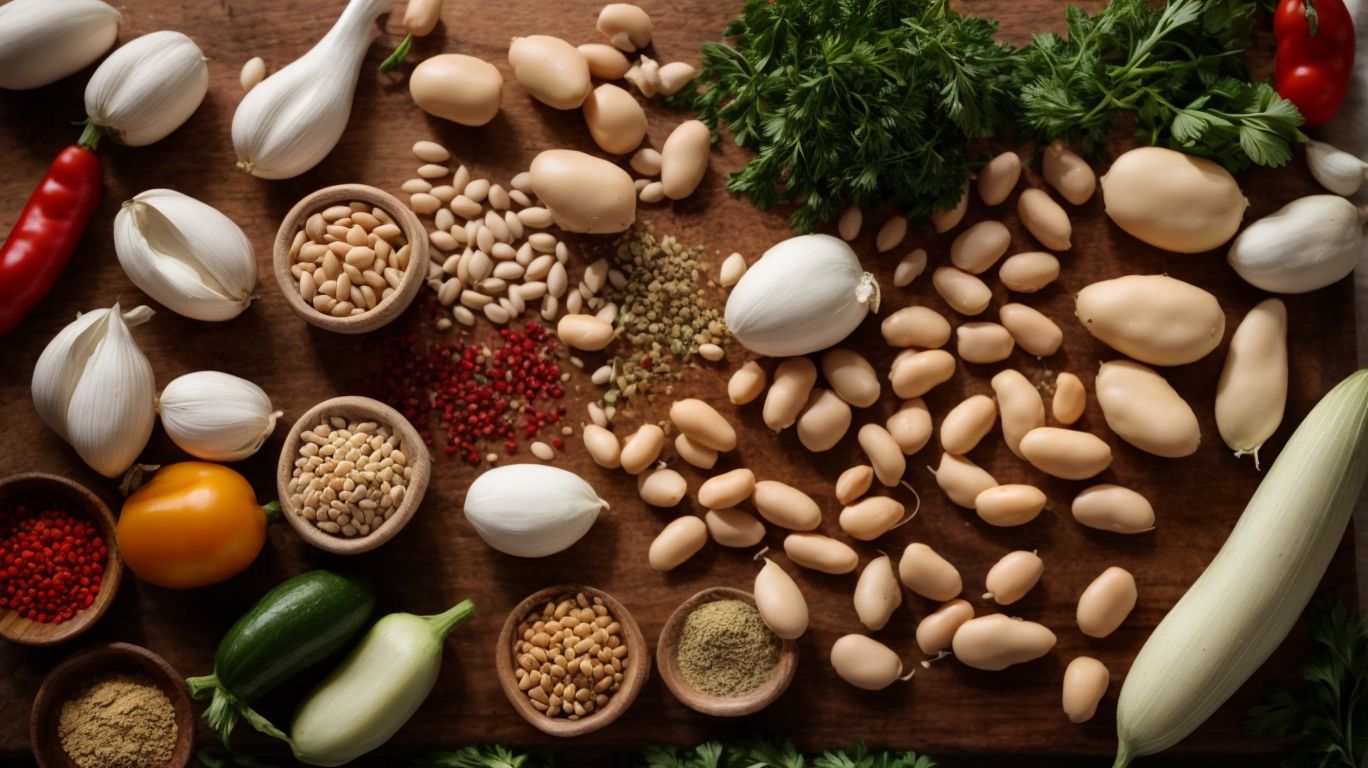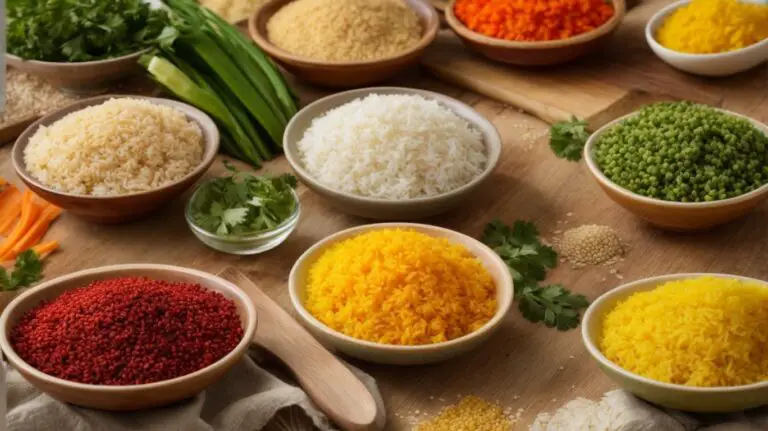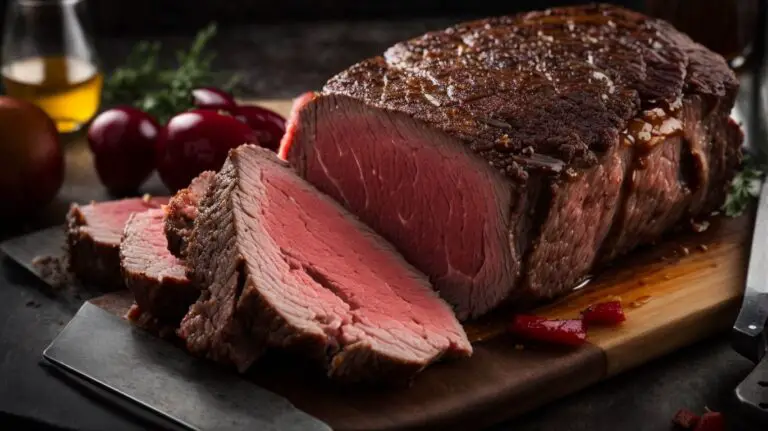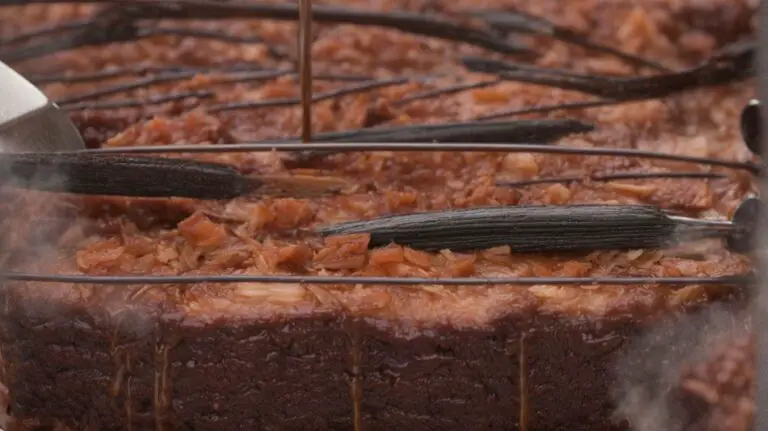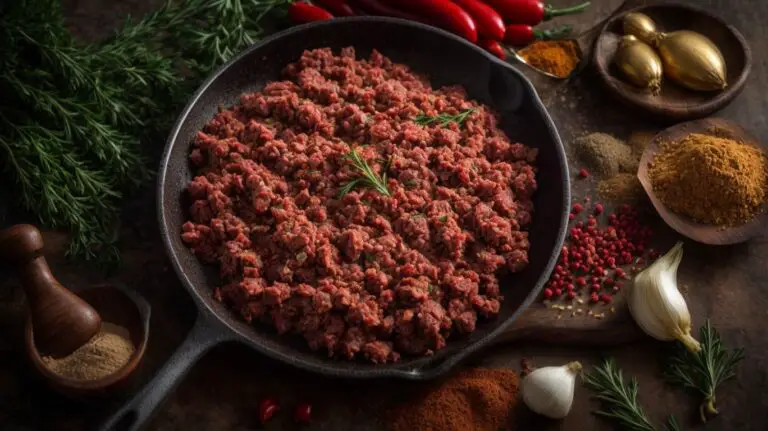How to Cook With White Beans?
Looking to add a nutritious and versatile ingredient to your cooking repertoire? Consider white beans!
We will explore the different types of white beans, their nutritional value, and various cooking methods including soaking, boiling, pressure cooking, and slow cooking.
Discover delicious recipes like white bean soup, salad, dip, and stew. Learn expert tips on seasoning, storing, reheating, and incorporating white beans into your favorite dishes. Let’s get cooking with white beans!
Key Takeaways:
What Are White Beans?
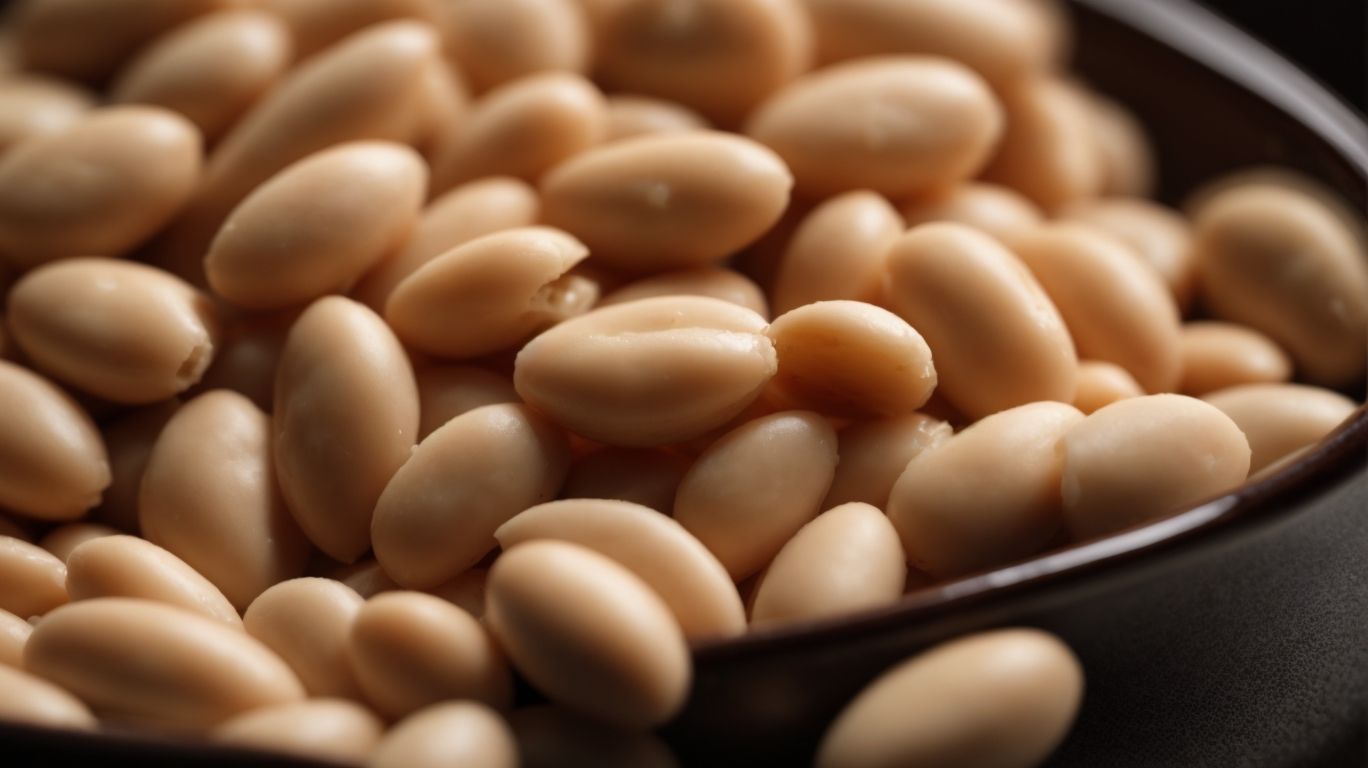
Credits: Poormet.Com – Gregory Flores
White beans are a type of legume known for their creamy texture and hearty flavor, often enhanced with Mediterranean spices like garlic.
These versatile beans are a staple in Mediterranean cuisine, used in dishes such as hearty stews, salads, and dips like hummus. They effortlessly absorb flavors, making them perfect for rich, savory dishes or light, refreshing salads.
Not only do white beans add a satisfying creaminess to dishes, but they are also packed with essential nutrients like fiber, protein, and minerals. This nutritional powerhouse can aid in digestion, support muscle growth, and boost overall health.
Research suggests that incorporating white beans into your diet may help regulate blood sugar levels, promote heart health, and assist in weight management. Whether you’re simmering them in soups, mashing them for spreads, or tossing them in salads, white beans offer a delicious and nutritious way to elevate your meals.
Types of White Beans
White beans encompass a variety of types, including cannellini beans, butter beans, Great Northern beans, and navy beans, each offering unique flavors and textures.
While cannellini beans are native to Italy, cherished for their creamy texture and nutty flavor, they work well in salads, soups, and dips. On the other hand, butter beans, also known as lima beans, are larger and have a starchy, buttery taste, perfect for hearty stews and casseroles.
Great Northern beans are smaller than cannellini beans but offer a delicate flavor, ideal for mashing or pureeing in dishes like hummus or bean spreads. Navy beans, often used in baked beans or soups, have a soft texture and absorb flavors easily, making them versatile for various recipes.
Nutritional Value of White Beans
White beans are a nutritious source of vegan protein, offering a hearty and satisfying addition to a balanced diet.
Rich in protein, these beans are essential for those following a plant-based lifestyle. White beans are packed with fiber, aiding in digestion and promoting a feeling of fullness. Along with their protein and fiber content, these legumes provide valuable nutrients such as iron, magnesium, and folate, which are crucial for overall health.
Whether used in soups, stews, salads, or as a stand-alone dish, white beans enhance the nutritional value of any meal. Their versatility makes them a staple in vegetarian and vegan cooking, offering a meat-free option that doesn’t compromise on taste or nutrition. Embracing white beans in your diet can lead to numerous health benefits, including improved heart health, regulated blood sugar levels, and enhanced gut health.
How to Cook White Beans?
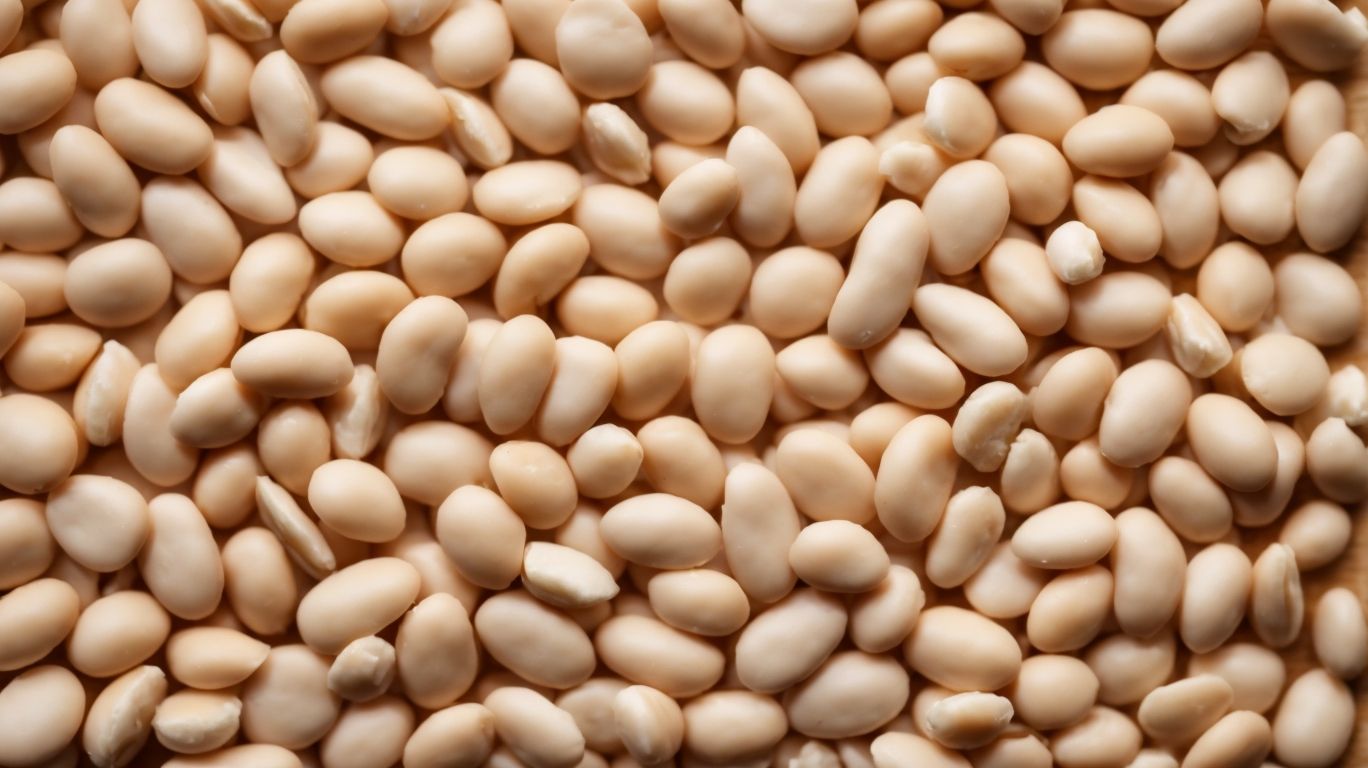
Credits: Poormet.Com – Gabriel Hernandez
Cooking white beans involves infusing them with aromatic garlic cloves for a simple yet flavorful homemade dish that delights the senses with its rich texture.
There are various methods to achieve the perfect garlic-infused white beans. One popular approach is to first soak the beans overnight to soften them, making the cooking process quicker and more efficient. Once soaked, you can sauté minced garlic in olive oil until fragrant and then add the drained beans, allowing them to simmer in a broth or sauce of your choice. This slow-cooking method allows the beans to absorb the garlic flavor deeply, resulting in a dish that is both comforting and satisfying.
Soaking White Beans
Soaking white beans in broth infused with aromatic herbs is a crucial step in meal prep, enhancing their flavor and aiding in storage for future use.
When white beans are soaked in a flavorful broth with herbs, their texture becomes smoother, and they cook more evenly. The broth adds a layer of richness and depth to the beans, making them incredibly versatile for various dishes. Properly soaked beans also reduce cooking time significantly. Consider adding a sprig of rosemary or a bay leaf to the soaking liquid for an extra burst of flavor. To store pre-soaked white beans, you can refrigerate them in an airtight container with a bit of the soaking liquid to keep them fresh for several days.
Boiling White Beans
Boiling white beans with aromatic herbs such as bay leaves and thyme is a simple and easy method to enhance their natural flavors and create a delightful dish.
Begin by rinsing the white beans thoroughly under cold water to remove any dirt or debris. Then, in a large pot, add the beans along with enough water to cover them completely. To infuse the beans with flavor, toss in a couple of bay leaves and a few sprigs of fresh thyme. Bring the water to a gentle boil over medium heat, then reduce the heat to simmer. Allow the beans to cook for about 1-1.5 hours or until they are tender but not mushy. The bay leaves and thyme will perfume the beans, offering a delightful aroma that fills your kitchen.
Pressure Cooking White Beans
Pressure cooking white beans in a one-pot meal results in a savory, rich, and silky dish that brings out the natural flavors of the beans in a convenient cooking method.
By pressure cooking white beans, you not only shave off lengthy cooking times but also lock in nutrients and flavors, ensuring a wholesome meal. The magic of pressure cooking lies in its ability to tenderize the beans perfectly, resulting in a creamy texture that blends flawlessly with other ingredients. The marriage of flavors that occurs during pressure cooking intensifies the taste profile, creating a dish that is not only delicious but also packed with richness and depth.
Slow Cooking White Beans
Slow cooking white beans yields a delicious and nutritious meal that is freezer-friendly, allowing for convenient storage and enjoyment at a later time.
When you simmer white beans slowly, their flavors meld together in a magical way, creating a dish that is rich, creamy, and oh-so-satisfying. The gentle heat of slow cooking helps the beans absorb all the savory spices and seasonings, resulting in a taste that is hard to replicate through other cooking methods.
Slow-cooked white beans are packed with essential nutrients like fiber, protein, and antioxidants, making them a wholesome choice for any meal. By preparing freezer-friendly meals with these beans, you can easily stock up your freezer with nutritious options that retain their flavor and texture beautifully. Whether you incorporate the beans into soups, stews, or casseroles, their versatility shines through, offering you endless possibilities for delicious and healthy meals.
What Are the Best Recipes for White Beans?
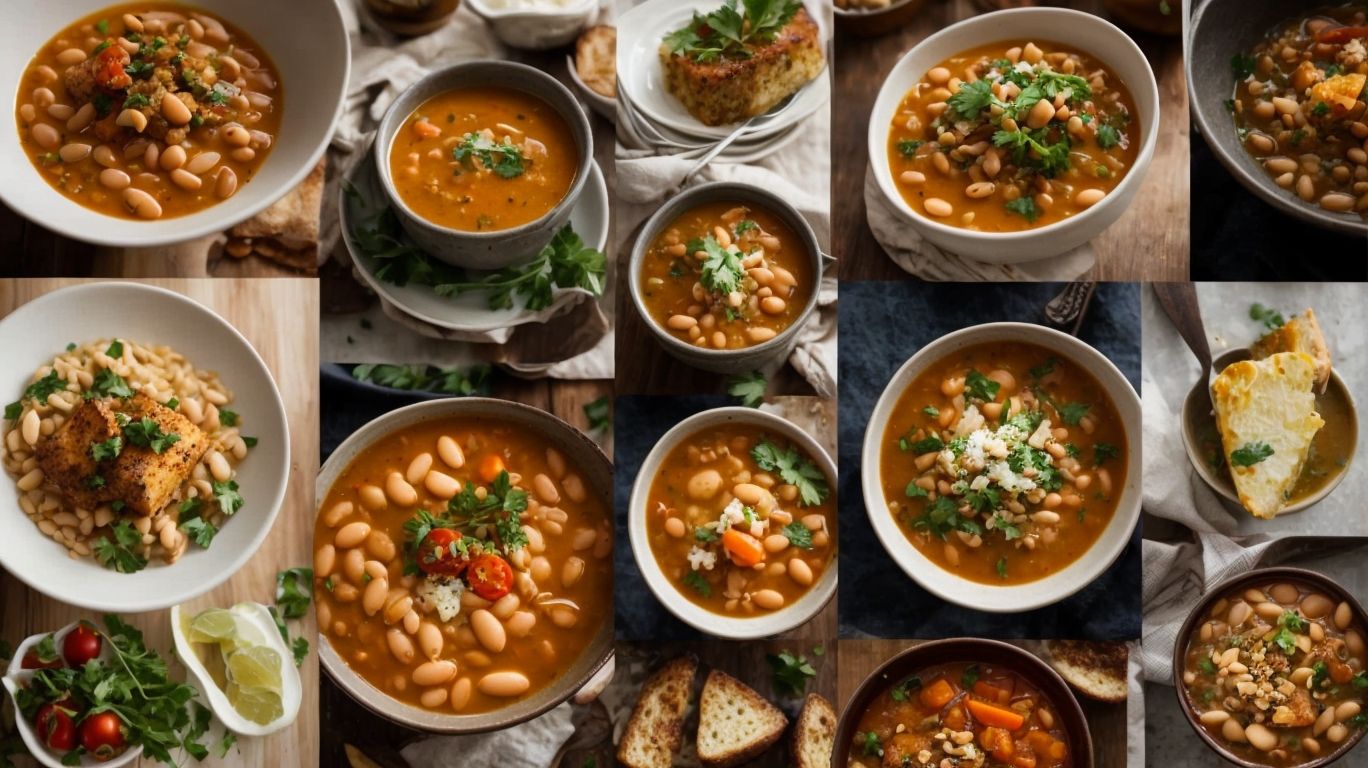
Credits: Poormet.Com – Roger Carter
Exploring the best recipes for white beans reveals delightful dishes featuring ingredients like Parmesan, cherry tomatoes, and olive oil, enhancing the flavor and texture of these versatile legumes.
White beans are a versatile addition to many dishes, whether used in salads, soups, or dips.
One delectable recipe is a White Bean and Cherry Tomato Salad, combining the creaminess of white beans with the sweetness of cherry tomatoes, sprinkled with grated Parmesan and drizzled with a zesty olive oil dressing.
Another enticing option is a warm White Bean Stew, where slow-cooked white beans are simmered with sautéed garlic, onions, and herbs, creating a hearty and flavorful meal.
These dishes not only showcase the nutrient-rich white beans but also offer a medley of flavors and textures that tantalize the taste buds.
White Bean Soup
White bean soup seasoned with cumin and Aleppo pepper offers a hearty and comforting dish that showcases the versatility of white beans in a delightful culinary creation.
To prepare this soul-warming white bean soup, start by rinsing and soaking dried white beans overnight for optimal texture and flavor absorption. In a large pot, sauté diced onions, carrots, and celery in olive oil until fragrant. Add minced garlic, ground cumin, and Aleppo pepper for that extra kick of warmth and depth of flavor.
Next, drain the soaked beans and add them to the pot along with vegetable broth, diced tomatoes, and a bay leaf. Allow the soup to simmer gently for about an hour until the beans are tender and the flavors meld together harmoniously.
Season the soup with salt and pepper to taste, and if desired, garnish with fresh parsley or a drizzle of olive oil before serving. Whether enjoyed on a cold winter evening or as a nutritious meal prep option, this white bean soup is a true testament to the comforting nature of hearty soups in every bowl.
White Bean Salad
A white bean salad featuring zesty lemon and fresh parsley is a simple and scrumptious dish that highlights the freshness and simplicity of white beans in a delightful salad creation.
When preparing this white bean salad, start by rinsing and draining a can of white beans in a colander.
Next, chop up a handful of fresh parsley leaves finely to add vibrancy and freshness to the salad.
In a mixing bowl, combine the white beans and parsley with a generous squeeze of lemon juice to infuse the salad with a tangy zest.
Season the salad with salt, pepper, and a drizzle of olive oil for that perfect balance of flavors.
For added texture, you can mix in some diced red onions or cherry tomatoes.
Serve the salad chilled and enjoy the burst of flavors that come from this simple yet delicious creation.
White Bean Dip
Whip up a flavorful white bean dip featuring Pecorino Romano and garlic, perfect for dipping with crusty bread and showcasing the culinary versatility of white beans in a delicious spread.
For this delectable white bean dip, you’ll need a can of white beans, Pecorino Romano cheese, cloves of garlic, a splash of olive oil, and a hint of lemon juice for a zesty kick. Begin by draining and rinsing the white beans to remove any excess liquid. In a food processor, combine the beans with freshly grated Pecorino Romano, minced garlic, and a drizzle of olive oil. Pulse the mixture until it reaches a smooth consistency, adding more olive oil or a splash of water if needed.
Season the dip with salt and pepper to taste, and don’t forget to add a touch of fresh herbs like parsley or basil for a burst of brightness. Blend the flavors together, giving the dip a taste test to adjust the seasoning as per your preference. If you prefer a creamier texture, you can always add a dollop of Greek yogurt or sour cream.
Transfer the creamy white bean dip to a serving bowl, drizzle it with a bit of high-quality olive oil, and a sprinkle of grated Pecorino Romano for an extra flavor punch. Serve the dip alongside a platter of sliced crusty bread, toasted pita chips, or fresh vegetable crudites for a versatile and crowd-pleasing appetizer that’s sure to impress your guests.
White Bean Stew
Craft a comforting white bean stew using frozen white beans and aromatic herbs to create a dish bursting with flavor and rich textures that exemplify the versatility of white beans in a satisfying stew.
When working with frozen white beans, ensure they are properly thawed before adding to the stew, allowing for a more even cooking process and balanced flavor absorption from the herbs.
Experiment with a blend of thyme, rosemary, and sage for a robust herb profile that complements the earthiness of the beans.
To enhance the texture of the stew, consider adding potatoes or butternut squash for a creamy consistency and a touch of sweetness that harmonizes with the savory herb-infused broth.
Tips for Cooking with White Beans
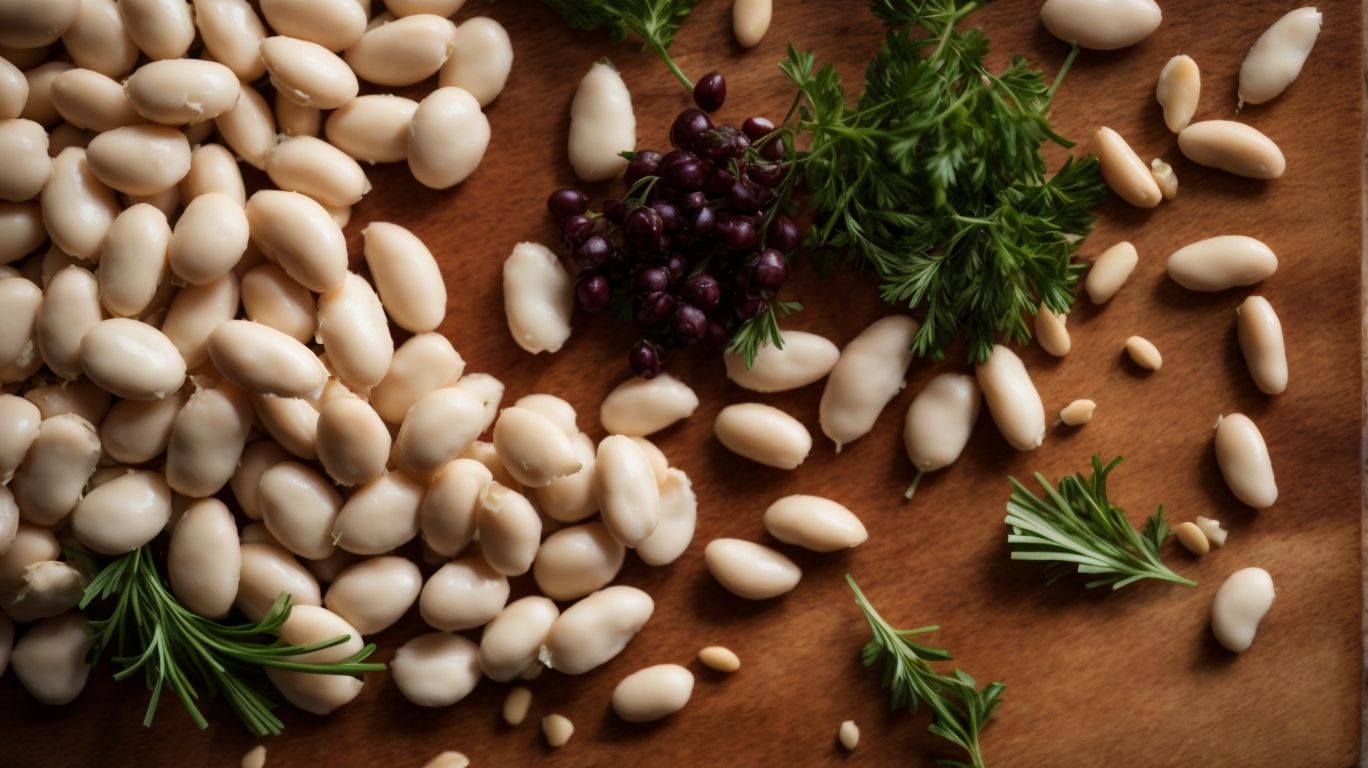
Credits: Poormet.Com – Joseph Martin
Mastering the art of cooking with white beans involves utilizing aromatic garlic, fresh herbs, and proper meal prep and storage techniques to maximize their flavor and convenience in various dishes.
When working with white beans, it’s crucial to soak them overnight to ensure a creamy texture and quicker cooking time. For added depth of flavor, consider sautéing minced garlic in olive oil before incorporating the beans.
Herbs like rosemary, thyme, and parsley complement white beans beautifully, adding a burst of freshness. To store cooked white beans, place them in an airtight container with a drizzle of olive oil to prevent them from drying out.
Experiment with different cooking methods such as simmering white beans in broth for a flavorful base in soups or pureeing them with herbs and spices for a flavorful dip or spread.
How to Season White Beans?
Seasoning white beans with aromatic Mediterranean spices, a hint of lemon, and a flavorful broth elevates their taste profile, creating a versatile and delicious base for various culinary creations.
Herbs like rosemary, thyme, and oregano complement the creamy texture of white beans, while a squeeze of fresh lemon juice adds a zesty brightness to the dish.
Experimenting with different broth variations such as vegetable, chicken, or even a rich tomato-based broth can further enhance the depth of flavors in your white bean dishes.
How to Store White Beans?
Storing white beans in the freezer after proper meal prep, accompanied by fresh herbs, ensures their preservation and availability for future use in various culinary endeavors.
In terms of freezer storage of white beans, it’s essential to first properly cook and cool them before sealing them in an airtight container or freezer-safe bag. Adding a variety of fresh herbs like rosemary, thyme, or parsley not only enhances the flavor of the beans but also contributes to their longevity.
By incorporating these aromatic herbs during meal prep, you can elevate the taste profile of your dishes while also maximizing convenience. Labeling the containers with the date of preparation can help you keep track of freshness, ensuring that you always reach for high-quality white beans for your recipes.
How to Reheat White Beans?
Reheating white beans with a drizzle of olive oil is an easy and versatile method to revive their flavors and textures, ensuring a quick and enjoyable dining experience with minimal effort.
To reheat white beans with olive oil, start by placing them in a microwave-safe bowl. Add a splash of water to prevent them from drying out during reheating. Cover the bowl with a damp paper towel to trap moisture and heat evenly. Microwave on high for 2-3 minutes, stirring halfway through. Alternatively, you can heat a skillet over medium heat, add a bit of olive oil, and sauté the beans until they are heated through and slightly crispy on the outside, enhancing their flavor.
How to Incorporate White Beans into Other Dishes?
Incorporating white beans into diverse dishes, such as pairing them with crusty bread for a savory and comforting meal, showcases their adaptability and culinary appeal in various gastronomic creations.
White beans, with their creamy texture and mild flavor, serve as the perfect canvas for bold and vibrant ingredients like sun-dried tomatoes and fresh herbs. Infusing white beans into a hearty stew with carrots, celery, and garlic adds depth and richness to the dish while providing a nutritious boost.
For a Mediterranean twist, consider blending white beans into a velvety dip with lemon, olive oil, and smoked paprika, perfect for spreading on toasted baguette slices or using as a flavorful sandwich filling.
Embracing the versatility of white beans opens up a world of culinary possibilities, inviting you to experiment with different flavor pairings and textures to create memorable meals.
Frequently Asked Questions
1. How do I properly cook with white beans?
To cook with white beans, you first need to soak them in water for at least 8 hours or overnight. Then, drain the water and add fresh water to a pot with the beans. Bring to a boil, then reduce the heat and let them simmer for about an hour until they are tender.
2. Can I use canned white beans instead of dried beans?
Yes, you can use canned white beans for convenience. Just make sure to drain and rinse them before using, and adjust the cooking time accordingly. Canned beans typically have a shorter cooking time than dried beans.
3. What dishes can I make with white beans?
White beans are versatile and can be used in a variety of dishes, such as soups, stews, salads, dips, and even burgers. They add a creamy texture and protein to any dish and can be flavored with different spices and seasonings.
4. How can I add more flavor to my white bean dishes?
White beans have a mild flavor, so they pair well with strong and bold flavors. You can add ingredients like garlic, onions, herbs, and spices to enhance the taste of your white bean dishes. You can also use them in recipes with other flavorful ingredients like tomatoes, peppers, and sausage.
5. Are there any health benefits to cooking with white beans?
Yes, white beans are a nutritious and affordable source of protein, fiber, and essential vitamins and minerals. They can help improve digestion, regulate blood sugar levels, and lower the risk of heart disease. Plus, they are low in fat and calories, making them a great addition to a healthy diet.
6. Can I freeze cooked white beans?
Yes, you can freeze cooked white beans for up to 6 months. Just make sure to let them cool completely before storing them in an airtight container or freezer bag. When you’re ready to use them, thaw them in the fridge overnight before reheating in your desired dish.

